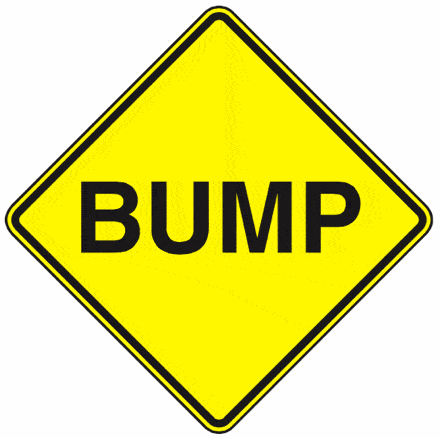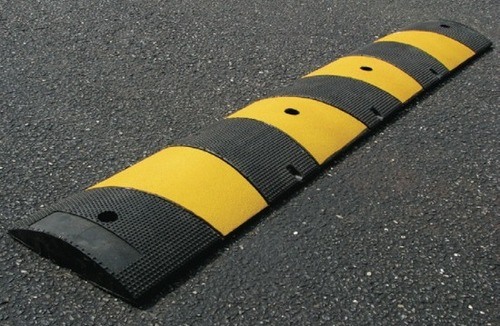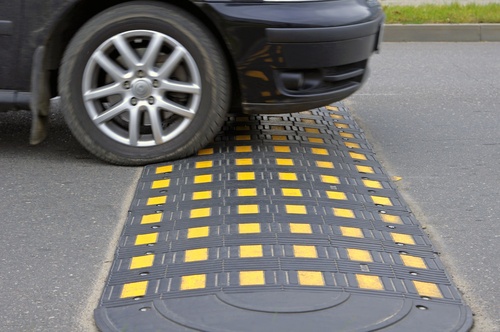Why are Speed Bumps and Humps Used?
Posted by Allstate Sign on Aug 11th 2017

Speed bumps and humps are commonly used as speed control devices on roads and in parking lots. While it’s easy to confuse the two, it’s important to understand that there is a difference between speed bumps and humps. This will ensure you buy the correct product for your personal needs.
Speed Bumps vs Speed Humps
Both speed bumps and humps are used for similar purposes: to slow down traffic and enhance safety. But did you know that they’re actually two different products?
Speed Bumps

Speed bumps are what you commonly see in parking lots, which typically have a posted speed of 5 to 10 mph. These devices are designed to abruptly slow down cars to a speed of about 2 to 5 mph. Speed bump height is typically 3 to 6 inches, which makes them effective at forcing cars to greatly reduce their speeds at the bump.
Since speed bumps are typically installed in parking lots, there are no hard and fast regulations for how they should be installed. Usually, regulations are up to local jurisdiction. However, speed bump grades are typically capped at 8 percent. Typically, a series of speed bumps must be spaced at least 300 feet apart.
Because speed bumps have such a steep grade, they can be hard on vehicles driving at fast speeds, especially emergency vehicles, trucks and other oversized vehicles.
Speed Humps

Speed humps, on the other hand, are less aggressive than their speed bump cousins. Speed humps are wider and lower in height than speed bumps, and are designed to reduce speeds down to 15-20 mph. They measure about 3.5 inches in height and are usually painted to alert drivers of their existence. They are sold as end caps and speed hump sections.
As with speed bumps, speed humps are usually regulated by local governments. They’re ideal for use on private roads such as those belonging to neighborhoods, parks or campuses. Their less aggressive design helps cars slow down at a more gradual pace, which makes for a safer experience for both drivers and pedestrians.
Which is Right for You?
Not sure whether speed bumps or humps are right for you? These general guidelines can help you narrow down your purchase decision.
- Speed bumps are ideal for parking lots where very slow speeds are the norm. They force cars to slow abruptly to a speed of between 2 and 5 miles per hour. Speed bumps can cause the driver noticeable discomfort at higher speeds.
- Speed humps are ideal for private roads that have relatively mild speeds. They encourage cars to gradually slow down to a speed of about 15 to 20 miles per hour and give the driver little discomfort.
Both speed bumps and humps are designed to calm traffic and enhance safety for pedestrians and cyclists. While both devices are designed to improve safety, speed humps are best suited for roads, while speed bumps should be reserved for parking lots and driveways.
For all your speed control needs, you can trust Allstate Sign & Plaque to have the perfect product for your demands. Our traffic control products collection includes both speed bumps and speed humps as well as other essential products such as traffic barricades, parking curbs and traffic cones.
If you’re still not sure which product is right for your needs, please don’t hesitate to
contact us. Our team of dedicated specialists is ready to help you find a great product that meets your demands.
